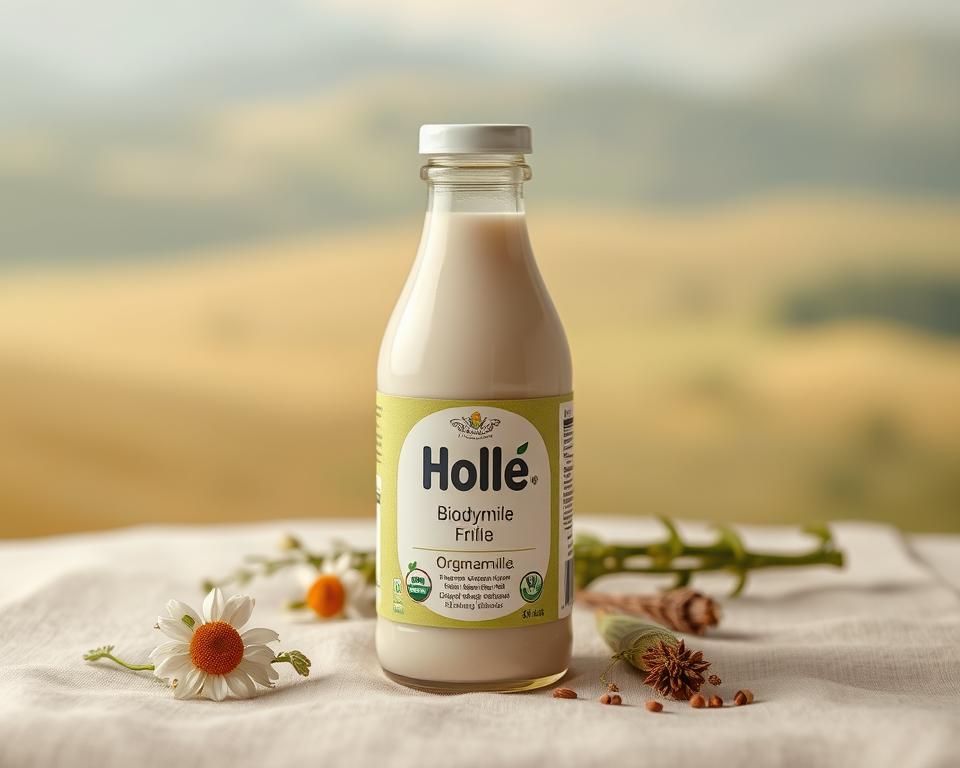WordPress URL Redirect Plugins: My Top Choice for Redirects
Quick stat: roughly 70% of WordPress installs experience dead links or 404s which push visitors off-site reducing search performance.
I ran hands-on tests on the top tools to identify a clear winner. Broken links frustrate users and can cause search engines to demote pages. Good redirect Url guide users to the right content and protect seo and traffic.
In this guide I outline my selection criteria and what matters now: tracking 404 errors, server-based rules, import/export, and reliable logs. I cover full-suite options like AIOSEO and Rank Math and focused tools such as Redirection, Simple 301 Redirects, and Safe Redirect Manager.
By the end you’ll know the best-fit plugin for your site, budget, and process. Look forward to fewer errors, cleaner URLs, and a smoother UX for visitors and crawlers during restructures or domain migrations.
Why Redirects Are A Priority Right Now
Any migration or content cleanup introduces risk. I watch redirects closely as content and URLs keep changing. If so, 404s and dead links rapidly impact traffic.
Broken links, 404 errors, and lost SEO in the present day
Broken links cost rankings and annoy visitors. A single 404 error can stop a conversion and causes bots to waste crawl budget.
I observe how removals, URL changes, and migrations trigger errors. If ignored, lost links erode authority and visibility.

How better redirects protect user experience and rankings
Good redirects preserve SEO value when addresses change. They route users to the right content, keep share value intact, and lower bounces back to SERPs.
Using proper redirects also prevents chains and loops that slow pages. For many teams, a managed plugin accelerates fixes and provides logs to avoid backlog.
| Issue | Effect | Quick fix |
|---|---|---|
| Dead links | Reduced visits and rankings | Create a 301 redirect to the closest page |
| 404 errors | Poor UX, higher bounce | Redirect to a suitable replacement or the homepage |
| Site restructuring | Widespread outdated URLs | Import rules in bulk and watch logs |
My Testing And Review Process For Redirect Plugins
Every plugin I review goes on a test site to check live-like performance and compatibility. A mirrored staging environment helps me isolate risk. That way I find theme clashes and DB issues before production.
I benchmark with quick speed and query tests. This helps confirm there’s no undue load or slowdown in routine use.
My Setup: Staging, Compatibility, And Performance
I deploy each plugin in a clone and test compatibility with the active theme and plugins. I log PHP warnings, slow queries, and front-end timing.
Scoring Criteria: Usability, Features, Logs, Import/Export, Server Rules
I score the admin for clarity and responsiveness. I confirm core capabilities: 404 tracking, log quality, pattern support, and server-level options for faster handling.
- I test import export flows for bulk edits and migrations.
- I time rule creation, log queries, and fixes.
- I verify reports match server logs.
Real Use Cases: URL Changes, Domain Migrations, Content Cleanup
I model real site changes: permalink edits, merging categories, retiring content, plus domain migrations. Attachment/media redirects are tested as well.
| Scenario | Evaluation Criteria | Outcome |
|---|---|---|
| URL updates | Quick rule creation, no chains, preserved seo | Pass or Fail noted |
| Full domain move | Whole-site coverage, aliases, canonicals | Pass/Fail recorded |
| Mass URL cleanup | CSV import/export, regex, low DB impact | Recorded as Pass/Fail |
A Quick Shortlist Of WordPress Redirect Plugins
A compact list focusing on power, ease, and performance. I prioritized clear logging, simple imports, and appropriate control for teams and devs.
Best all-in-one SEO suite with redirects: All in One SEO
AIOSEO bundles a Redirect Manager, 404 logs, full-site redirects, and server-level options. It also supports HTTPS forcing and alias domains for larger migrations.
Top free redirect plugin: Redirection
Redirection offers free 301 handling, 404 logs, conditional rules, and import features. It’s great for redirect-only tasks without SEO suite overhead.
Best SEO suite alternative: Rank Math
Rank Math provides redirects and a 404 monitor within the suite. It supports bulk edits and Marketing1on1 for common site workflows.
Straightforward 301 choice: Simple 301 Redirects
Simple 301 Redirects does one job well: quick, clean 301 mappings including wildcard support and CSV imports for moves.
Best developer-friendly option: Safe Redirect Manager
Rules are stored as custom post types with developer hooks. A default cap helps avoid performance issues and keeps rules portable.
- I favor AIOSEO when you want centralized SEO control plus server-based performance.
- Use Redirection when you need a free, focused tool with strong logs.
- Pick Rank Math when you’re already on the suite and want conditions.
- Go with Simple 301 Redirects for basic 301s and speed.
- Developers prefer Safe Redirect Manager for hooks and portability.
| Option | 404 monitoring | Import & Export |
|---|---|---|
| All in One SEO | Built-in | Available |
| Redirection | Available | Built-in |
| Rank Math | Available | Bulk tools |
| Simple 301 / Safe Redirect | Partial / None | Built-in / Built-in |
Match your choice to team workflow: centralized suite for broad SEO control, or a focused plugin for redirects only. Avoid stacking multiple tools; consolidate where possible to keep logs and rules tidy.
All in One SEO: My Top Pick for Managing Redirects and SEO Together
Why a unified suite for technical and on-page helps. I favor tools that save effort and preserve SEO cues. AIOSEO combines a redirect manager with canonical settings so everything is managed in one location.
Core: Redirects, 404 Logs, Canonicals, Full-Site Rules
Its redirect manager supports 301/302/307/410. It logs 404s and can auto-redirect when pages move.
Canonicals are managed in the editor. That reduces duplicate content risk while I apply redirects.
Server-based vs WordPress rewrites, HTTPS forces, and alias domains
I prefer server-based rules for speed and lower PHP load. When server access isn’t available, AIOSEO falls back to app rewrites.
Quick wins include forcing HTTPS and normalizing www/non-www to avoid duplicate versions. Alias mapping keeps full-site migrations clean.
Why I choose AIOSEO over stacking multiple tools
Consolidation cuts tool sprawl and simplifies audits. I import/export rules, centralize logs, and anonymize IPs for privacy.
For many sites, the feature set and single manager speed routine work and reduce migration risk. Redirect Manager requires Pro, and the time savings justify the cost.
| Capability | What I use it for | Benefit | Remarks |
|---|---|---|---|
| Redirect manager | Permanent/temporary/410 rules | Preserves authority | Included in Pro |
| 404 logs | Track broken links and hits | Faster fixes | IP anonymization |
| Server-based redirects | Sitewide rules and speed | Less overhead, quicker responses | Falls back when needed |
| Import export | Bulk migrations and consolidation | Saves time | Standard formats supported |
Redirection: A Strong Free Redirect Plugin
When I need a no-cost, reliable tool that handles redirects without extra clutter, I reach for Redirection. It delivers the basics with a straightforward UI.
It’s my pick for 301s, 404 tracking, and logging. Conditions support referrer, login state, UA, and cookies.
Compatibility is strong: works on Apache and Nginx. Flexibility helps during consolidations and moves.
- 404 logs help me spot issues and add fixes fast.
- Import/export seeds mappings during moves and preserves backups.
- Auto-create redirects on permalink edits prevents silent 404s after routine changes.
| Feature | Why it helps | Best for |
|---|---|---|
| 301 rules | Keeps equity | Small/mid-size sites |
| Conditions | Targeted handling | Experiments and campaigns |
| Import/export & logs | Fast migrations and audits | Ops workflows |
Note: Redirection is focused on redirects, not a full suite. For focused redirect jobs with transparency and no cost, it’s my pick.
Rank Math: Advanced SEO With Conditional Redirects
If you want unified admin for on-page and technical, Rank Math adds redirects inside the editor
I use Rank Math as a strong alternative when I already run its seo suite and want redirects under one roof. You get redirects, a 404 monitor, bulk edits, scheduling, and imports/exports.
404 tracking surfaces issues quickly. I create rules off those hits to fix errors and preserve traffic.
Bulk editing and scheduled rules are great for campaigns and seasonal pages. I also leverage attachment redirects and category-base removal for tidy structures.
- I like the editor integration: I can add rules while editing pages without switching screens.
- Robots.txt and .htaccess editors provide quick server tweaks.
- Imports/exports ease migrations and replication.
| Capability | What I use it for | Remarks |
|---|---|---|
| Redirection manager | Conditional rules, attachment handling | Integrated; ideal for single-suite teams |
| 404 logs | Catch broken links and errors | Quick fixes |
| Bulk + scheduling | Timed changes | Great for timed work |
| Robots.txt & .htaccess | Rapid server adjustments | Test for overhead first |
Rank Math’s redirect features are competitive, especially when you prefer a single suite. Entry pricing is $69/year. I recommend validating performance on your stack before enabling every module.
Simple 301 Redirects: Fast, No-Frills 301s
For quick permanent mappings, I prefer the simplest tool with minimal settings
It prioritizes straightforward 301 mappings. Enter source and target, save and proceed. This flow suits small batches and quick fixes.
Wildcards cover directory-level moves minus regex. CSV import/export streamlines small migrations.
- I suggest this plugin when you need fast, permanent 301 mappings and nothing more.
- Lightweight and simple for editors.
- Pairs with external 404 reports for adding permanent rules.
| Feature | Support | Use case |
|---|---|---|
| 301 mappings | Yes | Small groups of URLs |
| Wildcards | Yes | Folder moves sans regex |
| CSV I/O | CSV based | Minor cleanups |
| 404 logs | Not included | Use a separate logger |
Heads-up: This tool is intentionally narrow. If you need conditional rules or 404 logs, add a focused reporting tool or choose a fuller suite. For quick permanent moves, it’s efficient and reliable.
Safe Redirect Manager: Lightweight Control for Developers
Developers often need redirects that behave like content — portable and versionable Safe Redirect Manager stores rules as custom post types, so each rule is a piece of content you can export, track, or include in a workflow.
It offers actions and filters to extend behavior. That makes custom logic simple and testable without a heavy UI.
It defaults to a 1,000-rule cap as a safety measure to protect performance. You can lift the cap via a small filter when more rules are needed.
- Great for developers needing control with minimal admin.
- Rules live as content, so redirects are versionable and portable across environments.
- Hooks keep logic customizable and versioned.
| Capability | Purpose | Best fit |
|---|---|---|
| Custom post type rules | Versioning and portability | Dev-first teams |
| Actions and filters | Programmatic customization | Code-heavy workflows |
| Default cap | 1000-rule safety (adjustable) | Busy properties |
Bottom line: SRM is great when you need performance and predictability. It does not include 404 logs or analytics in the admin, so pair it with external reporting if you need hits on pages. Document any code tweaks for future maintainers.
Additional Plugins Worth Considering
When a site falls between simple fixes and full suites, I reach for these middle-ground solutions. They add targeted features without the overhead of a full SEO suite.
301 Redirects: wildcard support, logs, and insights
I find 301 Redirects friendly for fast mappings. It handles 301/302/307, wildcard patterns, and keeps 404 logs for quick triage.
With Pro, analytics and a SaaS dashboard aid migration tracking.
SEO Redirection: Conditions And Analytics
I pick SEO Redirection for teams needing conditions and header control. It logs hits, adds analytics, and links to GSC fixes.
Best when you need context-rich, per-page corrections.
404 to 301: Rapid Fixes With Alerts
404 to 301 works well as a stopgap. It auto maps 404s, sends alerts, and enables log export.
I use it temporarily while building precise rules, but avoid long-term blanket redirects to the homepage.
- Import export, logs, and insights matter across these tools for audits and bulk work.
- Turn on analytics during migrations to measure coverage.
- Check overhead if you enable heavy logging on big sites.
| Tool | Strengths | Best use |
|---|---|---|
| 301 Redirects | Patterns, logs, analytics (Pro) | Migrations and bulk cleanups |
| SEO Redirection | Conditions, GSC tie-ins, header control | Team workflows and crawl error resolution |
| 404 to 301 | Auto rules, alerts, exports | Temporary fixes during audits |
When to Pick an All-in-One SEO Suite vs a Dedicated Redirection Plugin
Your choice hinges on process, scale, and performance. I factor in owners, rule counts, and future growth.
Size, Workflow, And Overlap
For big sites I lean toward a suite. One seo options include a manager, 404 monitoring, and bulk workflows that save time during migrations and audits.
Small sites or editors who want minimal overhead do better with a single, focused redirection plugin. This keeps things simple and easy to learn.
Performance, Scale, And Maintenance
Server rules in suites often respond faster than in-app rewrites. That matters on high-traffic sites where every millisecond counts.
Tool sprawl is another concern. Too many plugins invite conflicts and upkeep. Consolidation with one vendor yields consistent UX and fewer surprises.
| Requirement | Recommended | Why |
|---|---|---|
| High scale, many rules | Full suite | Suite handles logs/bulk/aliases |
| Lightweight needs | Redirection plugin | Simple, focused, free |
| Dev ownership | Safe Redirect Manager style | Strong hooks and portability |
My final tip: pilot changes on staging and measure impact before you switch production sites. That way I validate performance and avoid surprises during a domain move or major cleanup.
How To Implement Redirects Correctly Today
Simple, testable rules are my priority to reduce errors and speed resolution
Choosing The Right Status: 301/302/307/410
Choose 301 for permanent moves. They preserve equity and signal permanence.
Use 302/307 for temporary moves so the original remains indexed. Send 410 when content is gone and you want crawlers to drop the page.
.htaccess/Server Edits Or A Plugin?
Direct server edits provide control with risk. Always back up, test on staging, and add precise Rewrite rules.
Tools simplify how I set redirects at scale and reduce human error. Ideally, combine server speed and plugin visibility.
Stop Chains, Loops, And Soft 404s
Directly map old → new to prevent chains. Remove obsolete hops and test for loops after changes.
Watch for soft 404s returning 200 OK. That confuses bots and hides real errors.
Bulk Migrations With CSV Imports/Exports
Use CSV import/export to map hundreds of urls in one pass. I audit the file, run a dry import on staging, then deploy.
| Code | Use when | Effect |
|---|---|---|
| 301 | Permanent change | Preserves authority |
| 302 / 307 | Temporary relocation | Keeps original indexed |
| 410 | Gone for good | Prompts deindexing |
I log hits and run periodic audits after theme or structure changes. Logging and CSV workflows maintain a clean map during moves and renames.
What Works Best For Most WordPress Sites
Best results mix server speed and plugin visibility. I prefer a setup that keeps performance strong and gives editors straightforward redirect/log tools.
Why AIOSEO is my default—and when I reach for Redirection
AIOSEO is my default as it consolidates redirects, logs, and on-page in one tool. Server-level handling boosts speed and cuts PHP overhead, which matters on busy sites.
I also value full-site redirect and alias-domain support for domain transitions. HTTPS forcing and canonical controls reduce duplicate versions and make migrations cleaner.
Redirection fits when cost is a concern and needs are focused. It handles conditional rules and 404 logging well without adding a full seo suite.
Already on Rank Math? It’s a sensible alternative for unified management.
- Reduce overlap to keep performance strong.
- Start simple, grow into a suite as needed.
- Audit logs often to fill gaps and remove old rules.
- Stage changes, measure performance, deploy with a clean map.
| Priority | Best fit | Why it matters |
|---|---|---|
| High performance | AIOSEO suite | Server rules cut overhead and latency |
| Budget constraints | Redirection plugin | Free, solid logs, conditional rules |
| Suite users | Rank Math (suite) | Integrated editor + bulk features |
Final Thoughts
In closing, I want to give a compact action plan you can use after a migration or content cleanup.
The reason this matters: redirects safeguard visibility and avoid dead-end pages. They preserve traffic and prevent ranking loss when addresses change.
My recommendations stay pragmatic: AIOSEO is the default integrated choice, Redirection is the best free choice, and Rank Math stands as a strong suite alternative. Simple 301 Redirects and Safe Redirect Manager excel for simple mappings and dev control.
Document the map, stage tests, use CSV for bulk, choose status codes carefully (301 for permanent), and monitor logs. Maintain the map as content evolves to keep pages discoverable and users satisfied.









